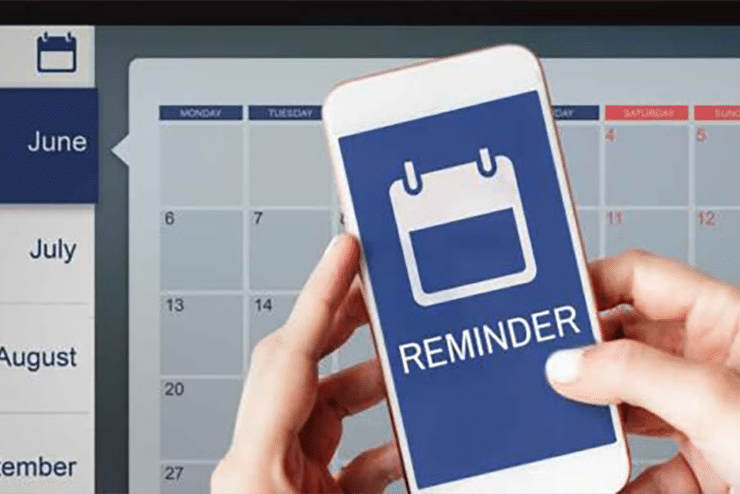
Turn Basic Messages Into High-Impact Campaigns With MMS
If you want to grab your customers’ attention and get real engagement, MMS is one of the best tools you can use. It lets you send images, videos, GIFs, and even GIFs to make your promotions, reminders, and updates stand out.
But while MMS can improve your customer outreach, it also comes with its own set of challenges.
There are instances that you would struggle with file size limits and inconsistent delivery across different mobile networks.
If you’ve ever had an MMS come through blurry, fail to send, or cost more than expected, you know how frustrating it can be.
Without the right system in place, you can end up wasting time and money on a campaign that doesn’t deliver the results you expected.
The good news? These challenges can be avoided with the right approach.
In this article, we’ll break down how you can maximize your MMS campaigns. You’ll learn why MMS is effective and how texting platforms like Textellent can simplify your marketing efforts.
Why Should You Still Use MMS?
With so many ways to reach customers, such as email, social media, and messaging apps, you might be wondering: Is MMS still worth using for my business?
The short answer is yes.
MMS marketing has been an underused but powerful tool for businesses. While SMS is great for short updates, MMS allows you to send eye-catching visuals.
People are naturally drawn to visuals. They stop scrolling, take a second look, and, most importantly, remember your message.
Other than promotions, you can also use MMS for customer service, reminders, and updates, too. Because MMS supports rich media, it can make everyday business communication feel more engaging and professional.
At the end of the day, you want results. MMS gets better engagement than SMS, which leads to more responses, more clicks, and more conversions.
If you’re already using SMS for business messaging, adding MMS can make a huge difference. Let’s go over why it still works and how you can use it to connect with your audience.
How Does MMS Work?
Multimedia Messaging Service allows you to send more than plain text messages through your customer’s phone.
While regular texts are limited to words, MMS allows you to send vibrant photos, engaging videos, and even voice notes. It adds flair to your business messages, which makes each interaction with your customers richer and more interactive.
Sending an MMS—Technical Overview
MMS operates through a combination of cellular network technology and the internet to deliver rich multimedia content to mobile devices. Here’s a detailed look at the process:
- The sender composes an MMS by adding text, images, videos, or audio files using a mobile device’s messaging app.
- The MMS is converted into a format suitable for transmission, which involves compressing the multimedia content to fit within the carrier’s size limits.
- The sending phone establishes a data connection, usually over GPRS (General Packet Radio Service), to provide TCP/IP network connectivity.
- The phone sends an HTTP POST request to the Multimedia Messaging Service Center (MMSC), which encodes the MMS message using the MMS Encapsulation Protocol defined by the Open Mobile Alliance. This includes the multimedia content and header information with recipient details.
- This HTTP POST is often routed through a proxy server. Devices may use WP-HTTP (Wireless Profiled HTTP) and TCP through a WAP 2.0 proxy server or the Wireless Session Protocol through a traditional WAP proxy server/gateway.
- The MMSC receives and validates the MMS message, temporarily storing the content and generating a URL link for the MMS content.
- The MMSC sends an MMS notification via WAP Push over SMS to the recipients, containing a URL to access the MMS content.
- The recipient’s device receives the MMS notification and initiates a data connection, typically over GPRS, to download the content.
- The device performs an HTTP (or Wireless Session Protocol) GET request to retrieve the MMS content from the MMSC.
Understanding how MMS works can help you make better use of it for marketing, customer support, and engagement.
Key Differences: MMS vs. SMS vs. Internet Messages
If you’re sending messages for your business, you’ve probably used MMS, SMS, and internet-based messaging apps like WhatsApp or iMessage.
However, each of these works differently, and choosing the right one can impact how well your messages reach your customers. Let’s break it down so you can see which messaging option fits your needs best.
Content
SMS (Short Message Service) is text-only. While it’s not technically limited to characters, it works best for short, direct messages like appointment reminders, order confirmations, and quick alerts.
Unlike SMS marketing, MMS lets you send pictures, videos, audio clips, and even group messaging texts. It’s much more versatile if you want to show rather than just tell.
Internet Messaging Apps (WhatsApp, iMessage, Facebook Messenger, etc.) allow for rich messaging with multimedia, reactions, and read receipts but require an internet connection.
Usage
SMS is ideal for quick communications like sending appointment reminders or brief updates because every mobile phone can receive texts, and they don’t require an internet connection.
Meanwhile, MMS allows your message to stand out and make a bigger impact. Visual content tends to catch the eye more than text alone. With MMS, you can grab attention, which is especially useful in sending promotional messages.
Messaging apps like WhatsApp, iMessage, and Facebook Messenger rely on an internet connection to work. iMessage is only available on iOS and lets users communicate if the recipient’s phone number is linked to an iPhone. This can be a drawback in areas with poor internet or cellular network connections.
Cost and Accessibility
While MMS messages generally cost more to send than SMS, the return on investment can be higher due to better engagement and conversion rates.
Many customers find visual ads more convincing and easier to understand, which can lead to more effective promotions and increased sales.
How Your Business Can Use MMS for Customer Engagement
You might be wondering whether MMS-capable messaging is worth adding to your strategy.
If you want your message to stand out and get noticed, MMS gives you a much better shot at making that happen. Here’s how you can use it better in your business.
Marketing Campaigns
If you’re launching a new product or promoting a special offer, MMS gives you a better way to showcase it through multimedia files.
Rather than sending a plain-text message about a new item in your store, you can include a high-quality image or a short video demonstrating how it works.
SMS users tend to engage more with visual content; an image or video increases the chances of a customer taking action.
You can also use MMS to send trackable SMS links to interactive content like contests and quizzes that further engage your customers.
Customer Service
Sometimes, explaining a problem over text isn’t enough. With MMS, customers can send photos or videos of the product issue they’re experiencing. This lets your support team see what’s wrong and provide more accurate, helpful advice.
Your team can send step-by-step visual guides or instructional videos to the customer’s phone for more complex issues.
Appointment Reminders
MMS helps you go beyond simple text reminders. You can send a visually appealing reminder to help the appointment stick in the customer’s mind. Consider sending a picture of the office to help users identify you.
If an installation reminder is being sent, maybe a picture of the technician arriving at the customer’s door might be reassuring. You can also directly include a map or directions to the appointment location in the message.
Personalized Offers
Personalized promotions work best when they feel relevant to the customer. MMS lets you tailor your business offers in a way that stands out.
You can celebrate customer milestones with personalized MMS messages. Send a birthday text message to your customer with a vibrant image or a short video clip offering a special promotion or discount as a gift.
Event Promotions
If you’re hosting an event, sending a series of MMS messages in the days leading up to it can help build anticipation.
You could send countdown messages with images or video clips showcasing what attendees can expect, such as special guests, speakers, or entertainment highlights.
It’s also ideal to share exclusive behind-the-scenes videos or photos of the event preparations. Showing the effort and excitement going into the planning can make potential attendees feel a part of something special.
Fraud Alerts
You can also send real-time alerts with MMS to notify customers of suspicious activities on their accounts. Customers receive these alerts promptly, which allows them to take quick action.
You may include images or screenshots of the suspicious transaction within the MMS. This can help customers immediately recognize whether the activity is fraudulent. Then, provide clear, visual instructions on which steps to take.
Digital Receipts and Payment Confirmations
After a purchase, you can send an MMS with a digital receipt attached. Instant confirmation provides customers with peace of mind, letting them know that their transaction was successful.
You can include links or quick-reply options in the MMS that allow customers to easily contact customer service, leave feedback, or get help with product returns.
Best Practices for Using MMS Marketing
If you’re using MMS for your business, you want to make sure your messages grab attention, get responses, and drive results. Simply sending images or videos isn’t enough; you need a strategy that makes your messages effective.
Here are some best practices for maximizing the impact of your MMS efforts:
Optimize Media for Mobile
File size limitations vary by carrier, but most MMS messages should stay under 600KB to ensure they are delivered quickly and maintain quality. Large images and videos may be compressed, which results in blurry or distorted visuals.
You must keep your visuals sharp and loading quickly by resizing images and keeping the videos short, ideally under 15 seconds.
Be Clear and Concise
With MMS, it’s easy to overdo it by packing too much into one message. But just because you can send videos, images, and GIFs doesn’t mean you should overload your audience.
Customers respond best to short, clear, and direct messages that tell them what they need to know.
A well-crafted MMS should communicate one main message instead of multiple ideas. You must use a single, high-quality visual and include an actionable call-to-action to guide the customer.
If you run a clothing store and you’re promoting a flash sale, avoid sending multiple images of different items in one message.
Instead, a single bold image with a short text like, “Limited-Time Flash Sale! Get 20% off today only. Tap below to shop now.”
Test Across Devices
Image sizes, video quality, and text formatting can look different depending on the recipient’s phone model, operating system, and network provider.
Before sending an MMS campaign to a large audience, you should test how messages appear on a variety of devices and carriers. This helps catch any formatting issues, compression problems, or delivery failures.
Personalize the Message
Generic mass messages don’t perform as well as personalized ones. MMS allows you to create tailored experiences based on customer behavior, location, or preferences.
Personalized promotions, such as birthday discounts or exclusive VIP offers, tend to see higher response rates.
Include a Clear Call to Action
A strong call to action (CTA) tells the customer what to do next. Without it, even the most visually appealing MMS can fall flat. The CTA should be direct and easy to follow.
Retail businesses running promotions can use CTAs like “Tap to Shop Now” or “Show this Message In-Store for 20% Off”.
Service-based businesses can include options like “Click to Book Your Appointment.”
The goal is to make it as effortless as possible for customers to take the next step.
Comply With Regulations
Before sending MMS messages, you must adhere to SMS compliance and obtain clear permission from recipients, usually through opt-in agreements.
Providing an easy way for customers to opt-out is equally important. Every MMS marketing campaign should include an option like “Reply STOP to unsubscribe” to easily remove themselves if they no longer want to receive messages.
Use Timing Wisely
Customers are more likely to engage with messages at certain times of the day or week, and understanding these habits can help improve response rates.
For example, sending a promotional MMS during peak shopping hours or just before weekends can increase interest and drive more sales.
Time zones also matter, especially for businesses with a wide customer base. Messages sent too early or too late may go unread or even annoy customers. Therefore, you must schedule your messages based on regional time zones and behavioral patterns.
Monitor and Adapt
Like any marketing strategy, MMS marketing requires ongoing adjustments to maximize effectiveness.
Tracking SMS metrics such as open rates, click-through rates, and conversion rates provides insight into what’s working and what needs improvement.
If engagement rates are low, you should experiment with different types of MMS content, including images, videos, and call-to-action styles.
Testing different delivery times, message formats, and audience segments can also help you adjust your approach over time.
Discover the Impact of Multimedia Messaging With Textellent
Many businesses struggle with high costs, file size limits, and inconsistent message delivery across different mobile networks. Without the right platform, sending and managing MMS campaigns can become time-consuming.
Textellent simplifies MMS marketing with its media library. You can either upload your own visuals or select from the wide range available on the platform. This feature is perfect for making sure your promotional messages match your unique brand and resonate with your audience.
If you want to make MMS marketing easy and effective, Textellent has everything you need. Sign up for a free trial or request a demo consultation today!
FAQs About MMS
What does MMS mean?
MMS stands for Multimedia Messaging Service. Many mobile operators support MMS as a standard feature where you can send product images, promotional videos, or even QR codes directly to customers.
Should my phone be on MMS or SMS?
It depends on the type of messages you send and your mobile plan.
SMS is best for short, text-only messages like appointment confirmations, delivery updates, and security codes. If you need to send images, videos, or GIFs, MMS is the better option.
Most modern smartphones automatically switch between SMS and MMS based on the type of content in the message. However, some mobile operators require you to enable MMS manually in your settings to send or receive multimedia messages.
If your business frequently sends promotional materials, customer service images, or video calling links, keeping MMS enabled is a good idea.
Why are my text messages being converted to MMS?
Your phone may convert a regular SMS to MMS for several reasons:
- If you attach an image, GIF, audio file, or video, the phone automatically switches to MMS.
- Some mobile operators automatically convert SMS messages longer than 160 characters into MMS.
- If you send a message to multiple recipients, your phone may convert it to MMS to support replies from all recipients in a single thread.
- Some phones convert text messages to MMS if they contain emoji-heavy content, special fonts, or rich formatting like bold or italicized text.
If your business prefers using SMS for cost reasons, check your phone settings and disable auto-conversion to MMS if needed.





